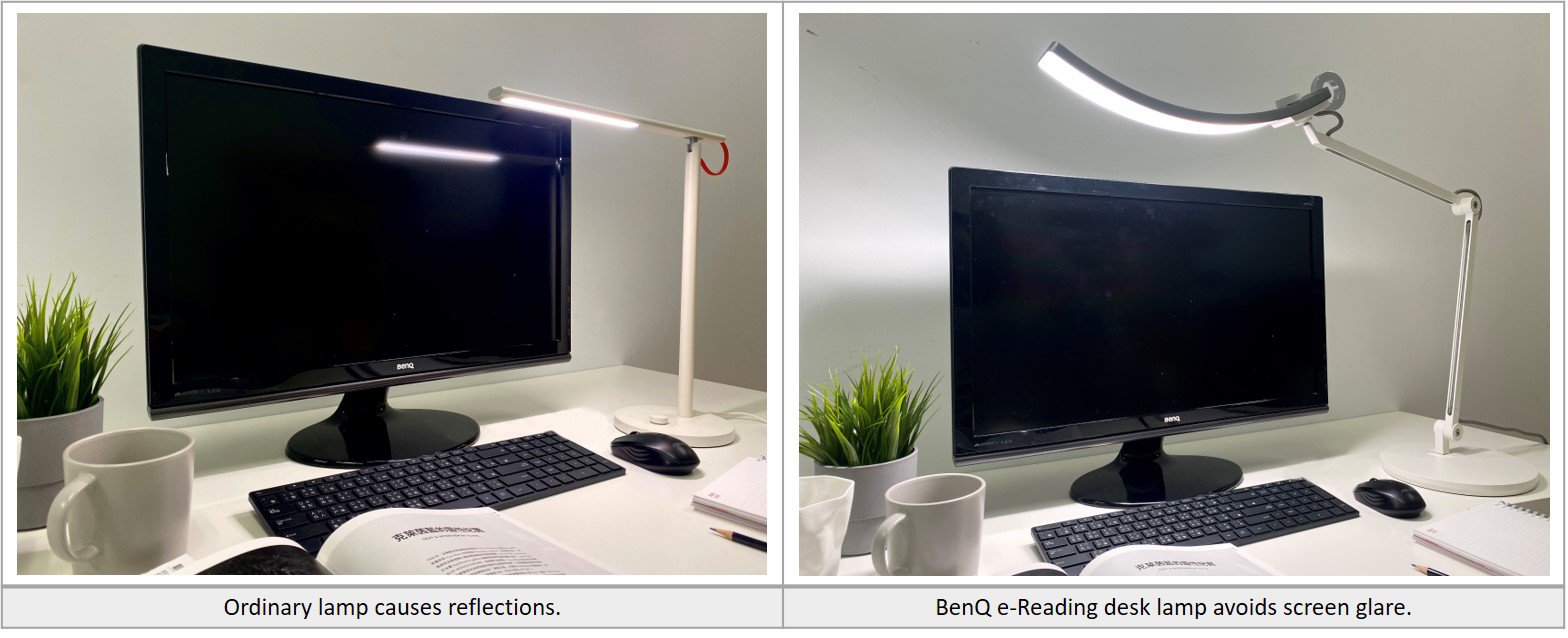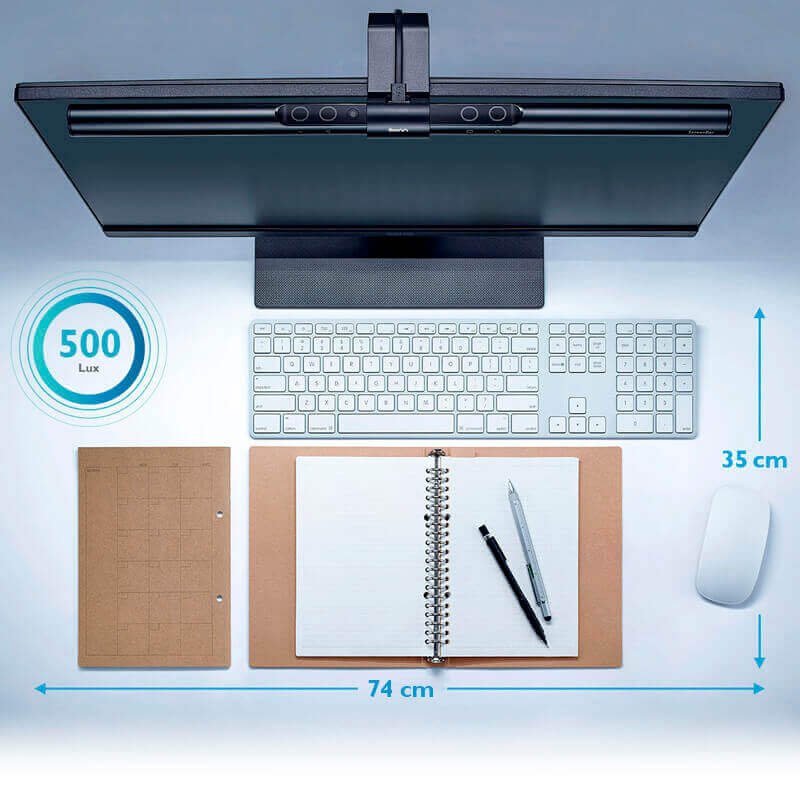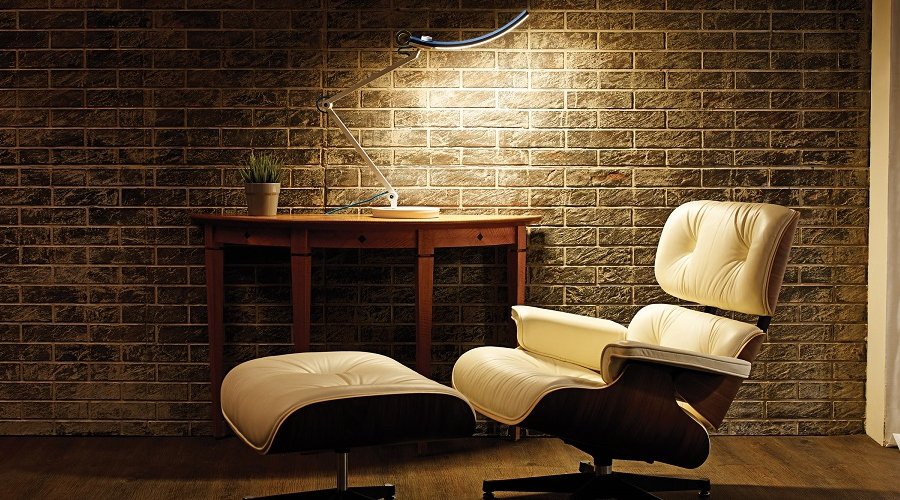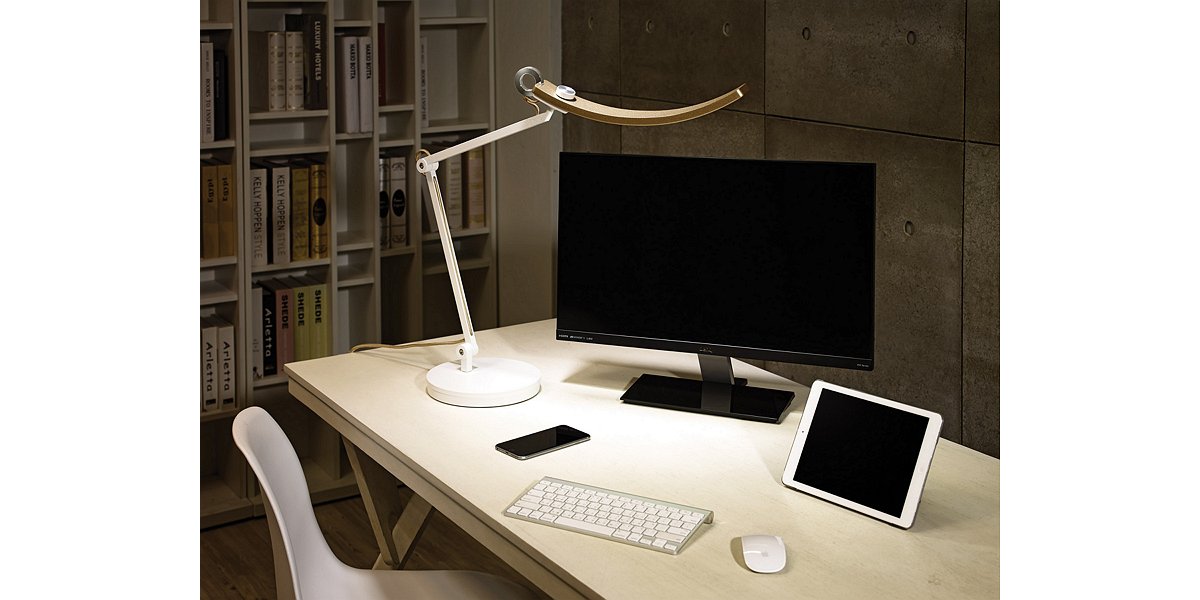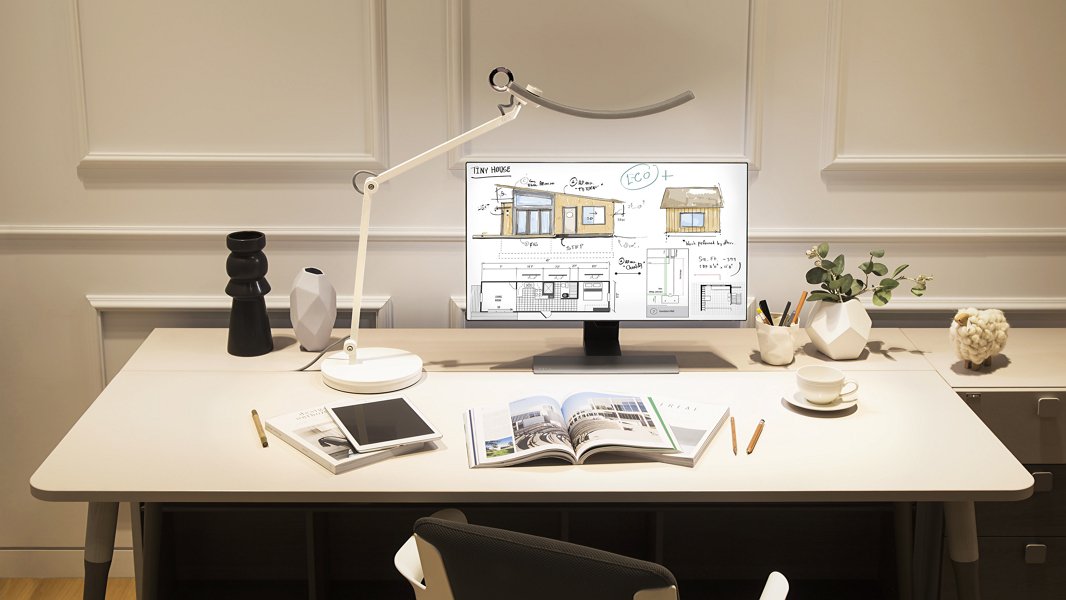How the “Shape” impacts a desk lamps brightness
The other component is how the lamp distributes the light. Again, for incandescents – the light usually went everywhere. But with LED’s a good designer can create a custom shape without too much difficulty to make the light work harder. For example, the BenQ ScreenBar desk lamp sits above the monitor and creates a light pattern that looks like a sideways “D,” which directs the light onto the desk – but not on the monitor.
The technical measurement for this is called “lux,” where the brightness is measured in the center at a specific height. In the example above, the ScreenBar is measured at 320 lumens (a little less than a traditional 40-watt bulb) but because it focuses its light around the desk area and not the monitor – it is quite bright on the desk – measuring 1000 lux from 45 cm high. The BenQ e-Reading lamp is designed to cover a larger desk area (while still avoiding the monitor), so it has a more rectangular light footprint and a curved head that enables a larger area of the desk to be well lit. For this lamp, it generates 900 lumens (over 60-watt equivalent) with 1300 lux in the center – demonstrating that it is re-allocating light into the other areas of the desk rather than in the center.
